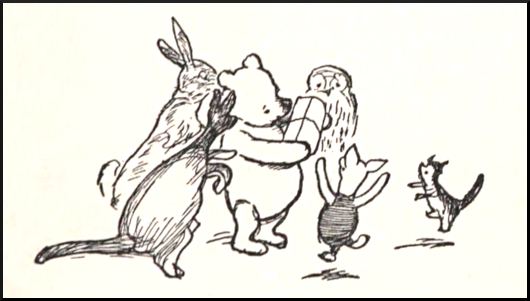Arthur C. Clarke? Fred Hoyle? Georg Borgstrom? Donald W. Mann? Gretchen C. Daily? Anne H. Ehrlich? Paul Ehrlich? Kenneth Smail?
 Question for Quote Investigator: The world population is projected to exceed 8 billion in 2022. Also, the United Nations Population Division forecasts that before 2100 the population will exceed 10 billion. Interestingly, some countries currently have declining populations.
Question for Quote Investigator: The world population is projected to exceed 8 billion in 2022. Also, the United Nations Population Division forecasts that before 2100 the population will exceed 10 billion. Interestingly, some countries currently have declining populations.
One prominent person suggested that the optimum human population should be dramatically smaller—only one hundred thousand. This notion has been attributed to science fiction luminary Arthur C. Clarke and prominent English astronomer Fred Hoyle. Would you please explore this topic?
Reply from Quote Investigator: In April 1968 Arthur C. Clarke published an essay titled “Next: On Earth, the Good Life?” in “Vogue” magazine. Clarke credited Fred Hoyle with suggesting that the ideal number of Earth inhabitants was relatively small. Boldface added to excepts by QI:[1] 1968 April 15, Vogue, Volume 151, Issue 8, Next: On Earth, the Good Life? by Arthur C. Clarke, Start Page 84, Quote Page 142 and 143, Condé Nast Publications, New York. (ProQuest)
There is no doubt that, with proper organization, our planet could support a population of many billions at a much higher standard of living than today. But should it? In a world of instantaneous communication and swift transport, where all men are virtually neighbours, is there any point in a population of more than a few millions? The answer to this question depends upon one’s philosophical and religious views concerning the purpose of life.
Fred Hoyle, for example, once suggested to me that the optimum population of the world should be about one hundred thousand—as that was the maximum number of people one could get to know in a lifetime.
Intriguingly, this low number was not due to fears of environmental impact; instead, Hoyle’s number was based on the limits of interpersonal relationships.
Below are additional selected citations in chronological order.
Continue reading “The Optimum Population of the World Should Be About One Hundred Thousand”
References
| ↑1 | 1968 April 15, Vogue, Volume 151, Issue 8, Next: On Earth, the Good Life? by Arthur C. Clarke, Start Page 84, Quote Page 142 and 143, Condé Nast Publications, New York. (ProQuest) |
|---|
 Question for Quote Investigator: Technophiles have welcomed recent advances in artificial intelligence in the domain of art. Yet, many artists and connoisseurs have been unsettled or openly hostile.
Question for Quote Investigator: Technophiles have welcomed recent advances in artificial intelligence in the domain of art. Yet, many artists and connoisseurs have been unsettled or openly hostile. Question for Quote Investigator: An entire lifetime can be encapsulated within the following memorably eccentric dialog:
Question for Quote Investigator: An entire lifetime can be encapsulated within the following memorably eccentric dialog: Question for Quote Investigator: Halloween is approaching, and the following quasi-philosophical saying fits the holiday theme:
Question for Quote Investigator: Halloween is approaching, and the following quasi-philosophical saying fits the holiday theme: Question for Quote Investigator: There are powerful pressures to conform and follow the conventions of one’s society. But the renegade does not fit into a pre-existing slot. A prominent literary figure once said:
Question for Quote Investigator: There are powerful pressures to conform and follow the conventions of one’s society. But the renegade does not fit into a pre-existing slot. A prominent literary figure once said: Question for Quote Investigator: A famous wit once offered the following piece of self-contradictory advice: Never take advice. Another prominent humorist offered a similar piece of oxymoronic guidance: Never give advice. Would you please help me to find these citations together with the correct phrasings?
Question for Quote Investigator: A famous wit once offered the following piece of self-contradictory advice: Never take advice. Another prominent humorist offered a similar piece of oxymoronic guidance: Never give advice. Would you please help me to find these citations together with the correct phrasings? Question for Quote Investigator: The following dialog has been ascribed to the famous English author A. A. Milne:
Question for Quote Investigator: The following dialog has been ascribed to the famous English author A. A. Milne: Question for Quote Investigator: Artificial intelligence (AI) researchers have used vast amounts of text to train digital neural networks which capture the intricate statistical patterns of word sequences. The resultant systems are called large language models. One of the most famous is GPT-3 (Generative Pre-trained Transformer 3).
Question for Quote Investigator: Artificial intelligence (AI) researchers have used vast amounts of text to train digital neural networks which capture the intricate statistical patterns of word sequences. The resultant systems are called large language models. One of the most famous is GPT-3 (Generative Pre-trained Transformer 3). Question for Quote Investigator: Apparently, a top researcher in artificial intelligence (AI) controversially suggested in early 2022 that contemporary digital neural networks employed in AI systems might be “slightly conscious”. Would you please help me to find a citation?
Question for Quote Investigator: Apparently, a top researcher in artificial intelligence (AI) controversially suggested in early 2022 that contemporary digital neural networks employed in AI systems might be “slightly conscious”. Would you please help me to find a citation? Question for Quote Investigator: A visitor to the home of a famous wit expected to find vases filled with beautiful cut flowers, but there were none. The wit explained the absence by making a comically grotesque comparison between cut flowers and decapitated people. Would you please help me to identify the humorist and find a citation?
Question for Quote Investigator: A visitor to the home of a famous wit expected to find vases filled with beautiful cut flowers, but there were none. The wit explained the absence by making a comically grotesque comparison between cut flowers and decapitated people. Would you please help me to identify the humorist and find a citation?